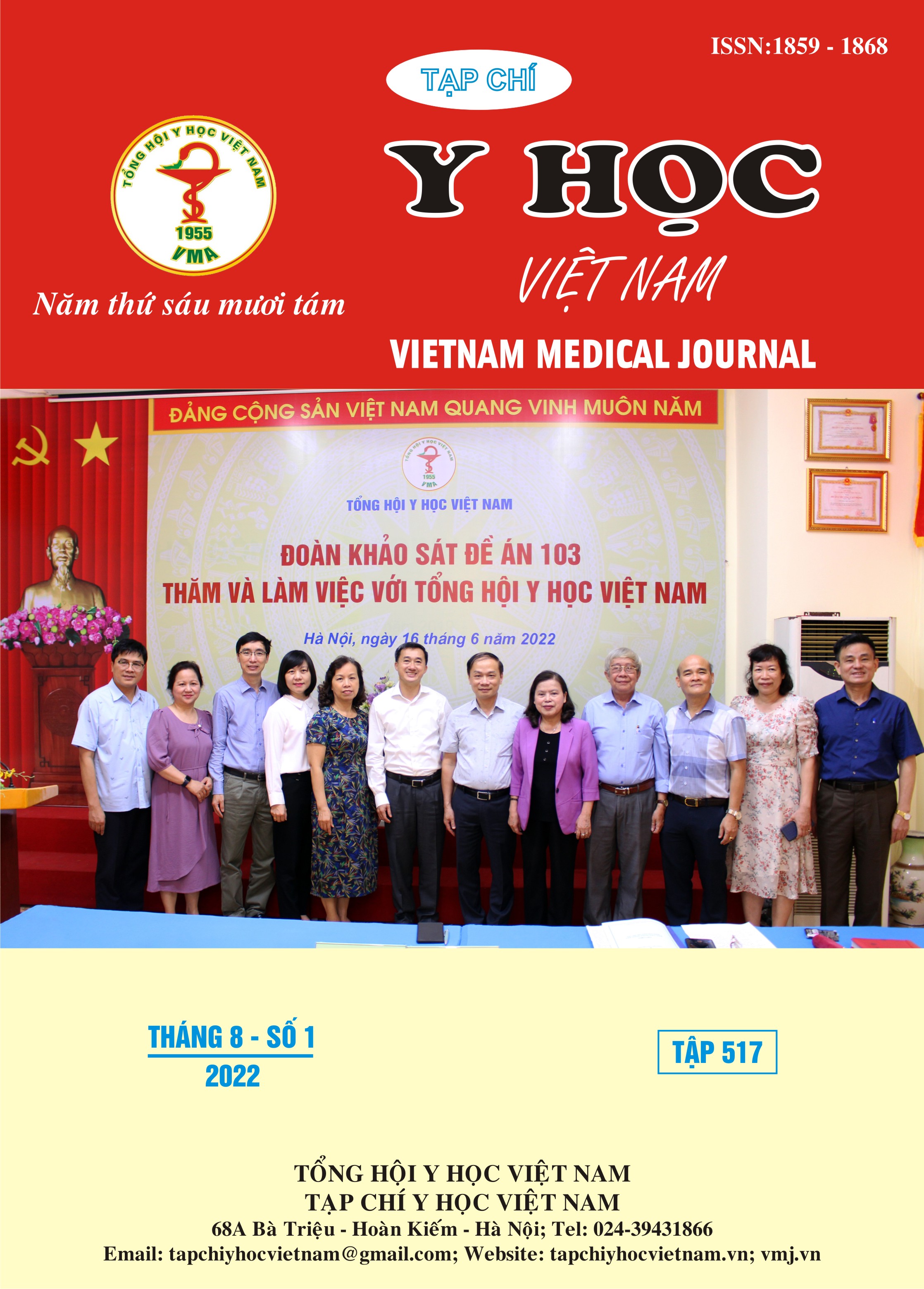PREVALENCE OF MASTALGIA IN WOMEN HAVING BREAST EXAMINATION IN TU DU HOSPITAL
Main Article Content
Abstract
Background: Mastalgia is one of the most common complaint in women going to the breast examination. It affects life qualities and sometimes cause severe mental problems for women. Notify the prevalence of mastalgia in women coming to the doctor for breast evaluation is an useful information for consultation as well as making better plan for managing the disorder. Objective: Assess the rate of mastalgia in women going for a breast examination in Tu Du hospital and analyze the other related factors. Methods: A cross-section study of 386 women going for a breast examination in Tu Du hospital from 02/2022 to 04/2022, data collection by interview method with structured questionnaire. Results: The rate of mastalgia in women going for a breast examination in Tu Du hospital was 57.5% [95%CI: 52.3-62.2]. The related factors include using hormonal contraception (PR*: 3.1; 95%CI: 1.1-9.4), prehistory of breast masses (PR*: 1,6; 95%CI: 1.01-2.6), premenstrual syndrome (PR*: 4.1; 95%CI: 2.5-6.6) and the age range menarche between 8-14 (PR*: 1.6; 95%CI: 1.01-2.5). Conclusions: The prevalence of mastalgia in women going for a breast examination in Tu Du hospital was 57.5%. Mastalgia need to be carefully screened and classified in clinical practice. Thanks to that, doctors can counsel, diagnose and plan a treament more effectively for the breast diseases.
Article Details
Keywords
mastalgia, cross-sectional study, prevalence, associated factors
References
2. D. N. Ader, M. W. Browne (1997), "Prevalence and impact of cyclic mastalgia in a United States clinic-based sample", Am J Obstet Gynecol, 177(1), pp. 126-132.
3. S. Kumar, R. Rai, V. Das, et al. (2010), "Visual analogue scale for assessing breast nodularity in non-discrete lumpy breasts: the Lucknow-Cardiff breast nodularity scale", Breast, 19(3), pp. 238-242.
4. T. Makumbi, M. Galukande, A. Gakwaya (2014), "Mastalgia: prevalence at a sub-saharan african tertiary hospital", Pain Res Treat, 2014, pp. 972726.
5. A. A. Mohammed (2020), "Evaluation of mastalgia in patients presented to the breast clinic in Duhok city, Iraq: Cross sectional study", Ann Med Surg (Lond), 52, pp. 31-35.
6. J. Scurr, W. Hedger, P. Morris, et al. (2014), "The prevalence, severity, and impact of breast pain in the general population", Breast J, 20(5), pp. 508-513.
7. Fatemeh Shobeiri, Khodayar Oshvandi, Mansour Nazari (2016), "Cyclical mastalgia: Prevalence and associated determinants in Hamadan City, Iran", Asian Pacific Journal of Tropical Biomedicine, 6(3), pp. 275-278.
8. Farideh Vaziri, Alamtaj Samsami, Zahra Rahimi, et al. (2016), "Prevalence, severity and factors related to mastalgia among women referring to health centers affiliated with Shiraz university of medical sciences", Journal of Health Sciences & Surveillance System, 4(2), pp. 64-69.
9. Cynthia M Welchek, Lisa Mastrangelo, Raymond S Sinatra, et al. (2009), "Qualitative and quantitative assessment of pain", Acute pain management, 147171.


